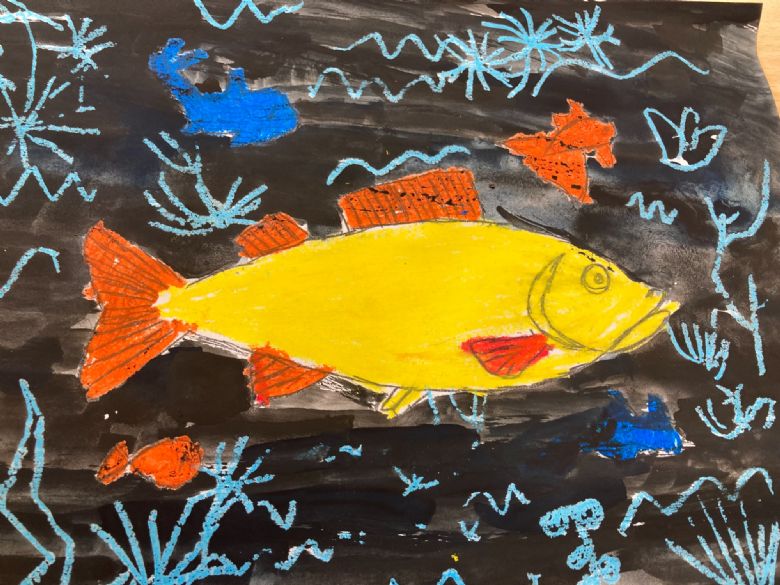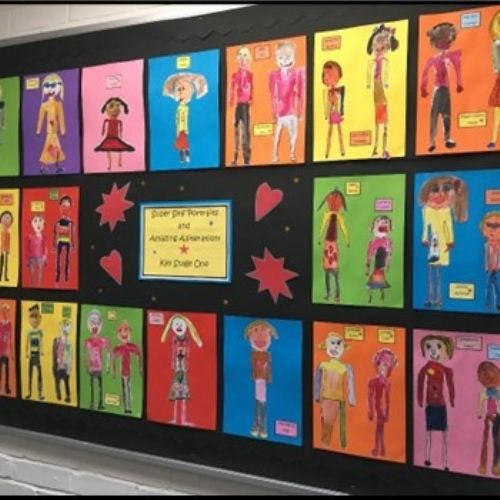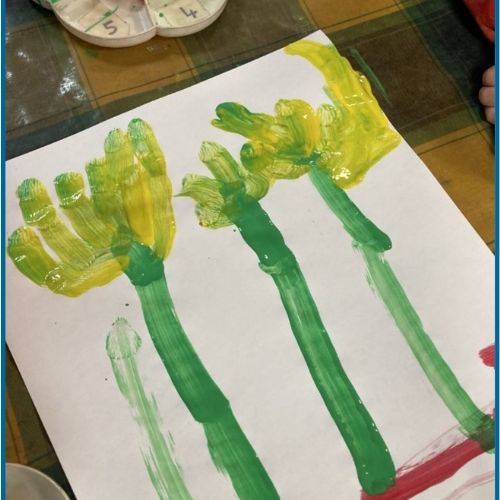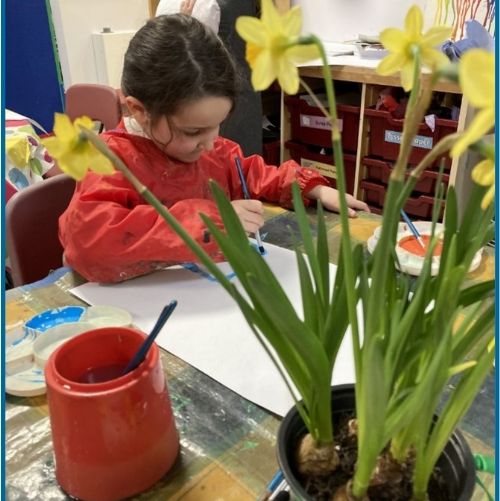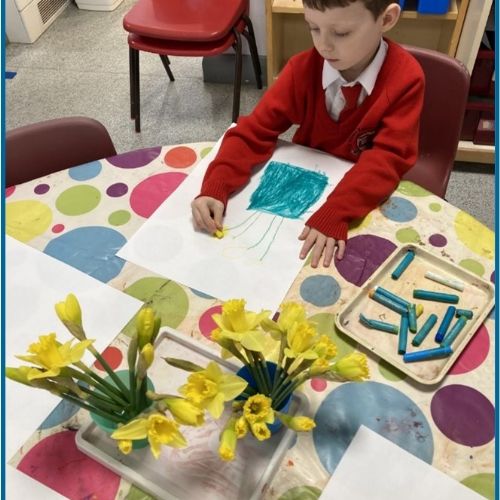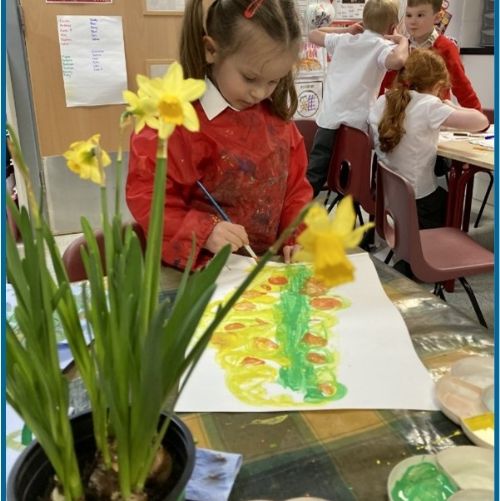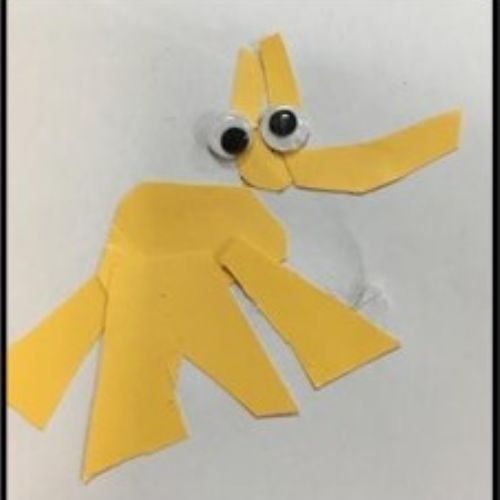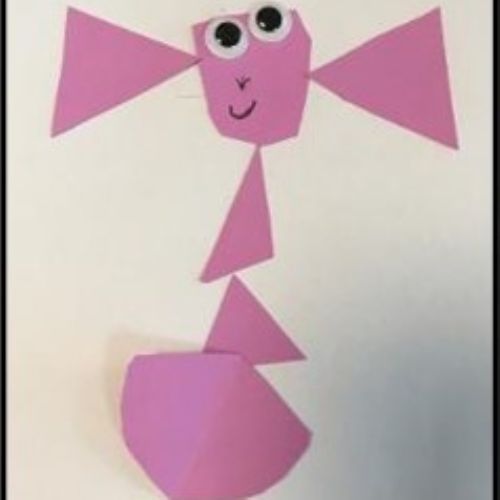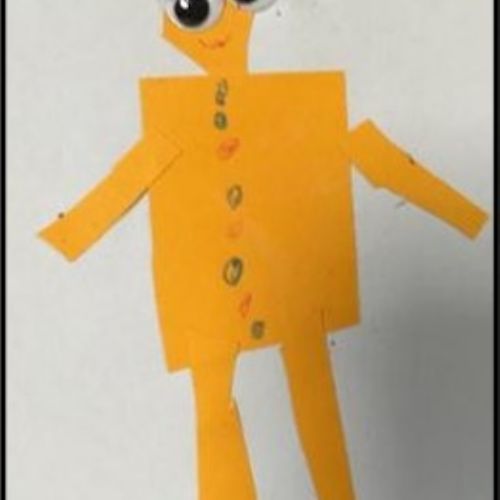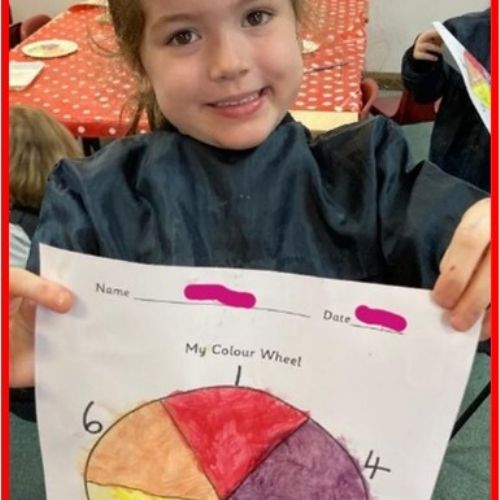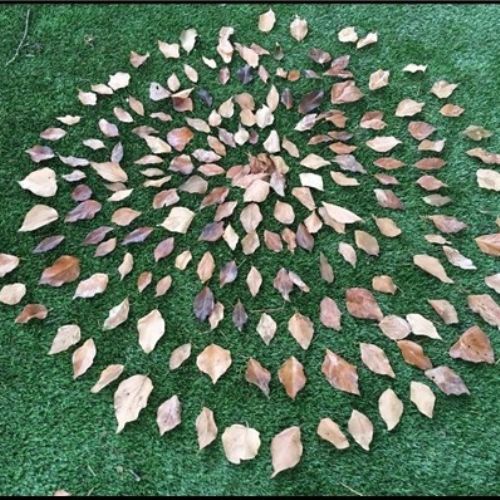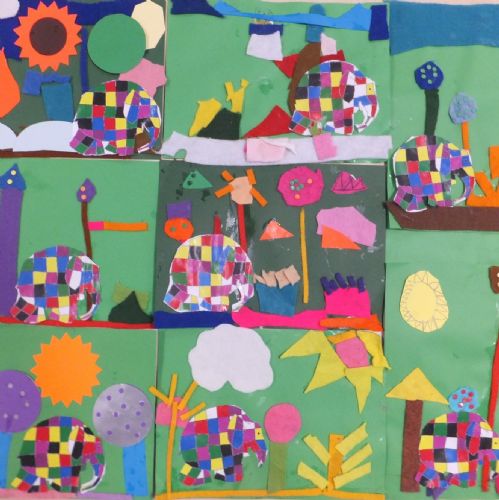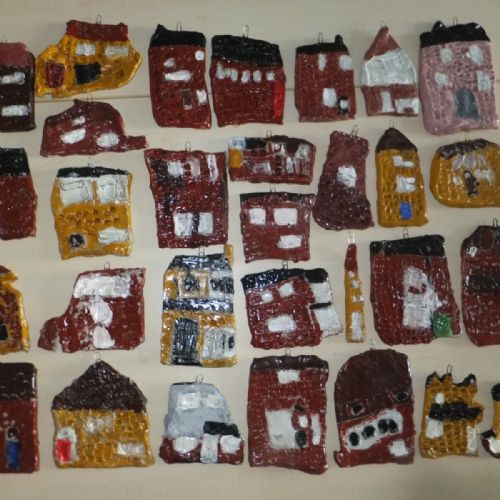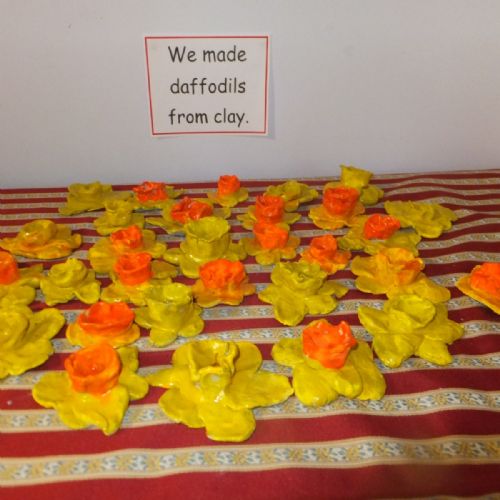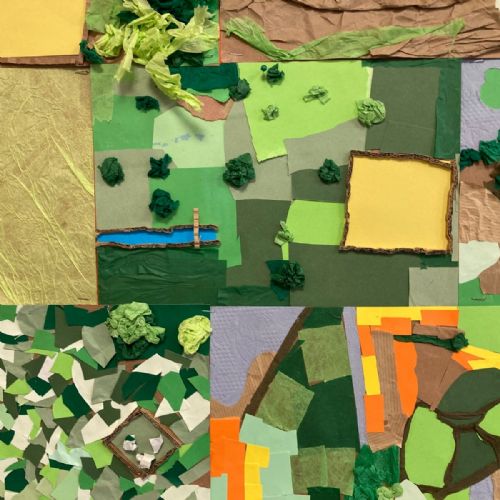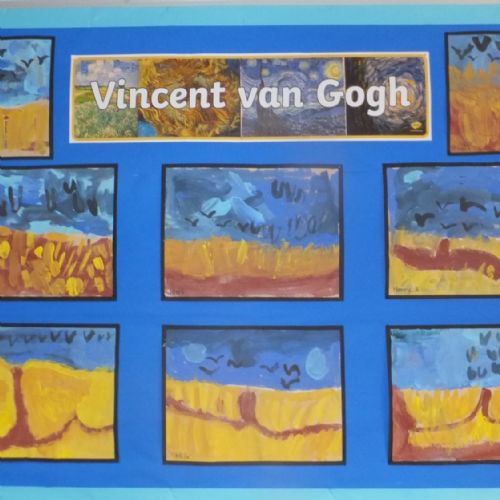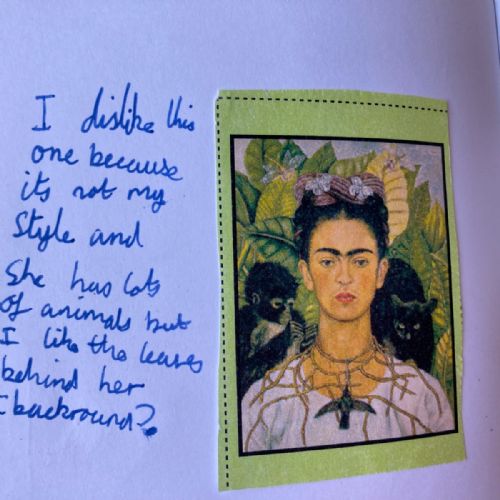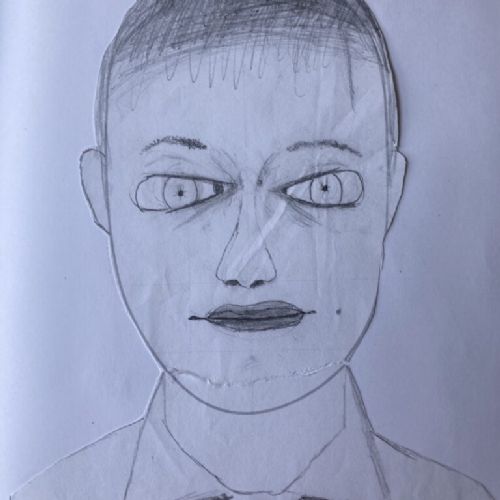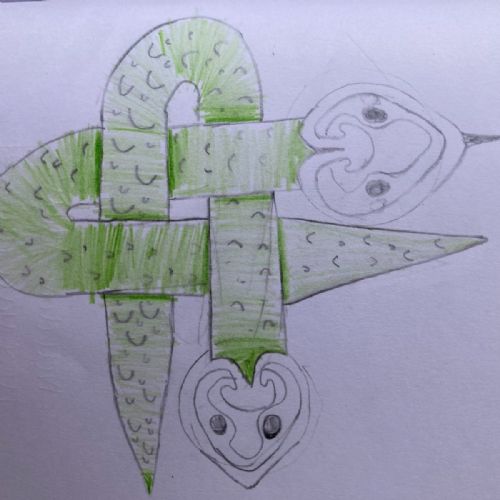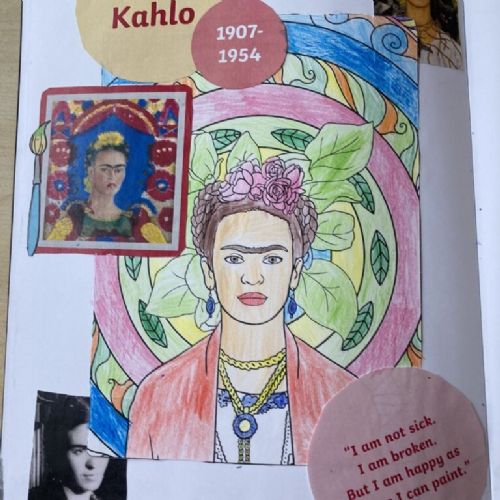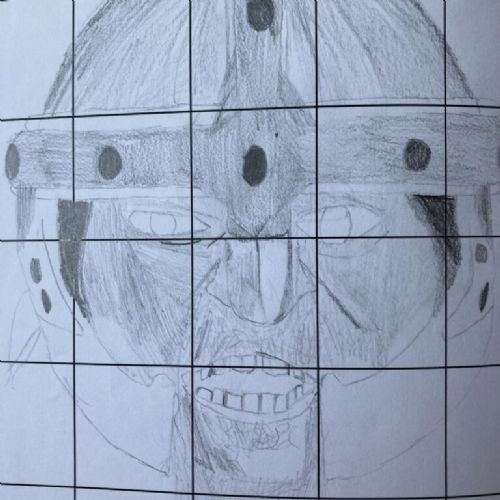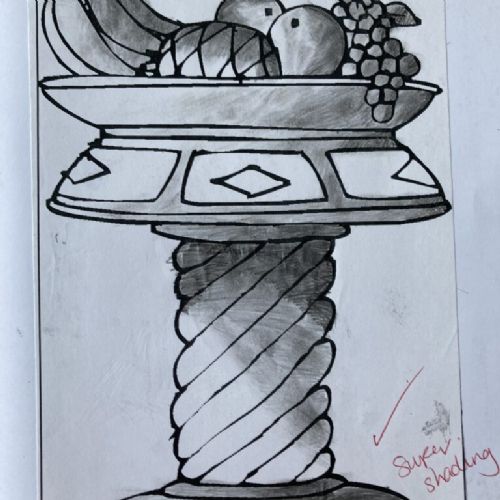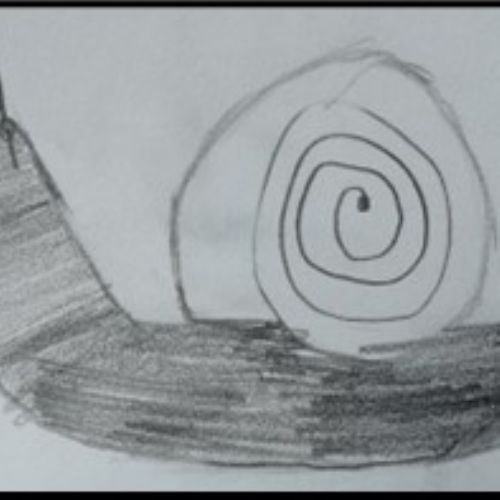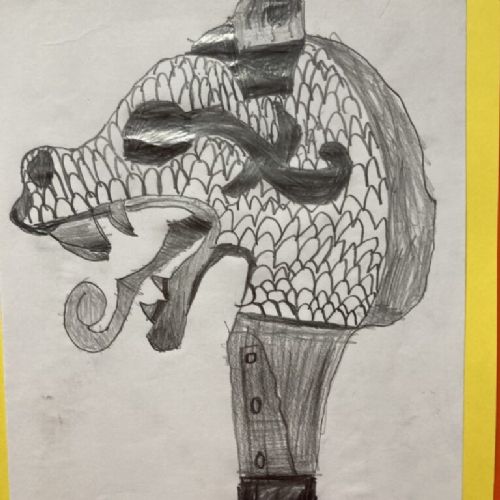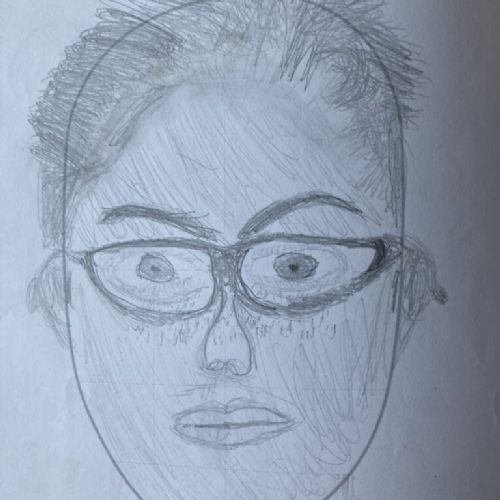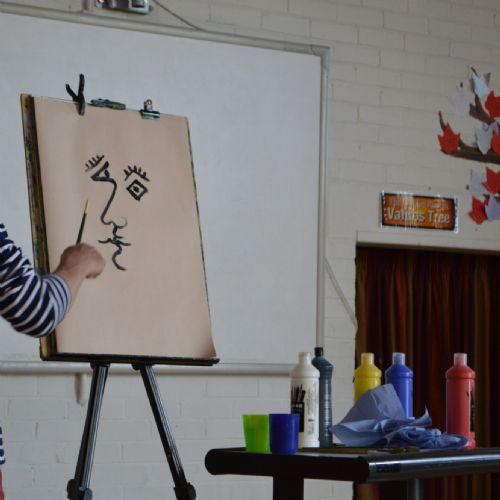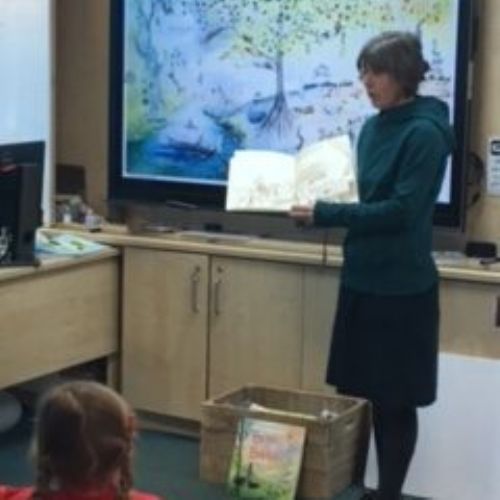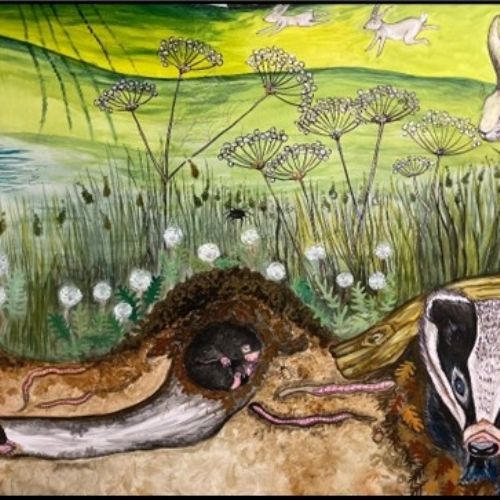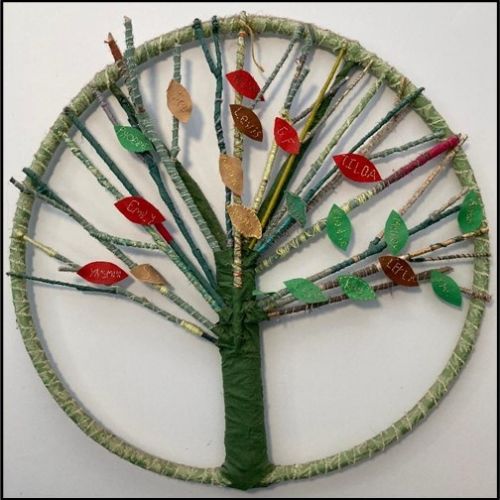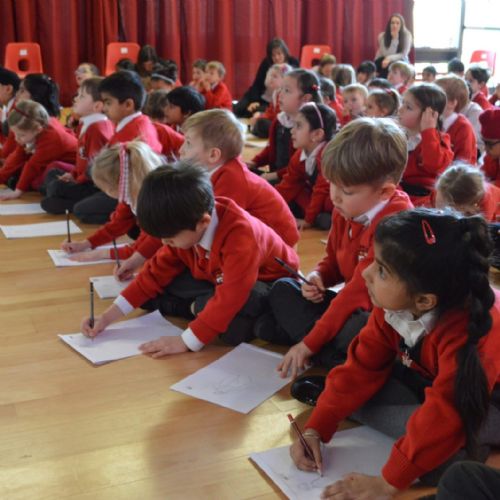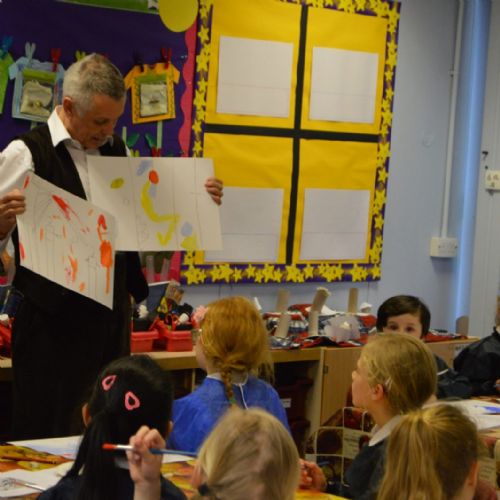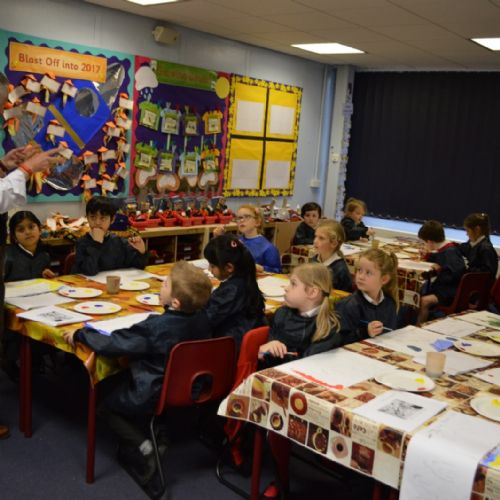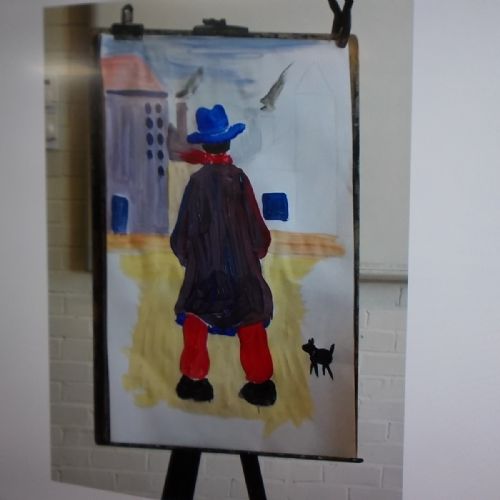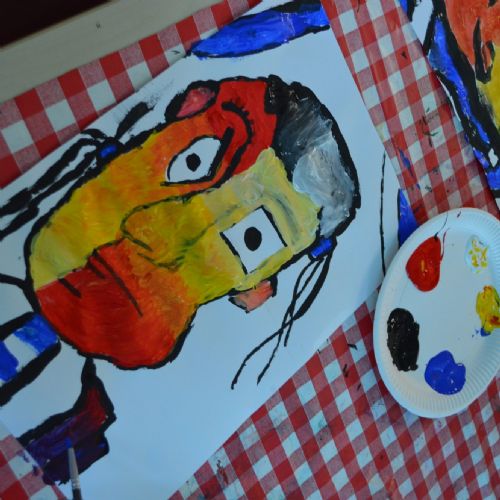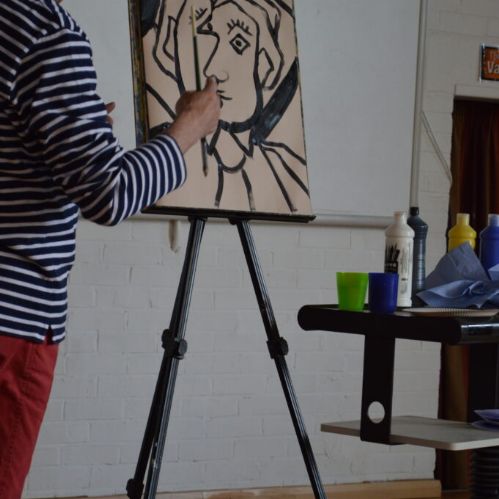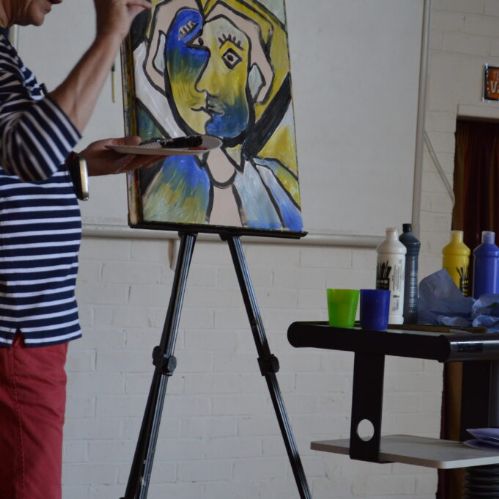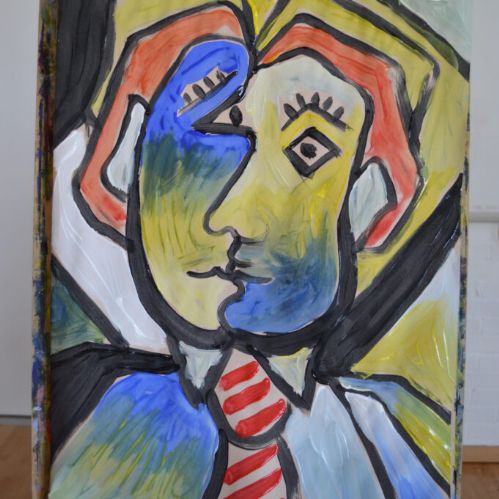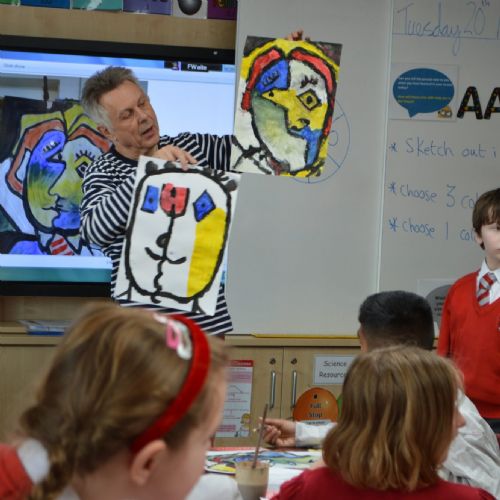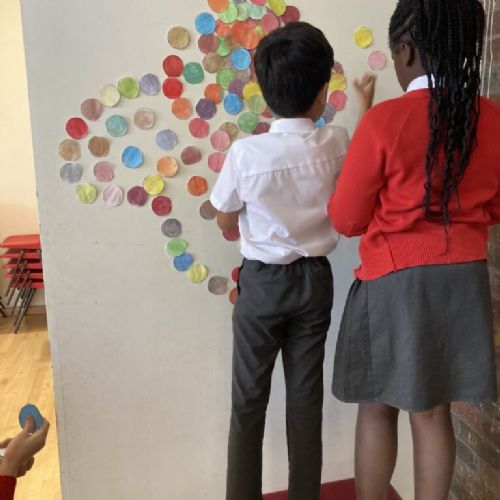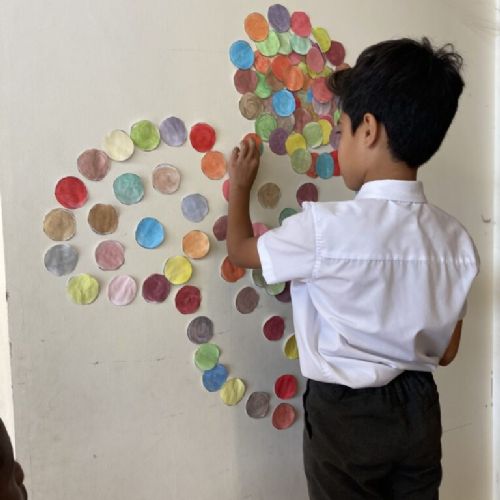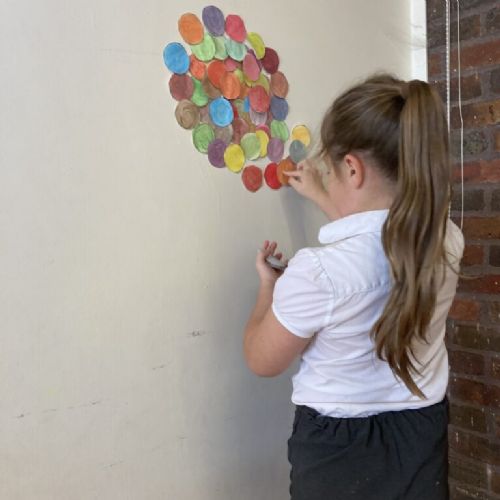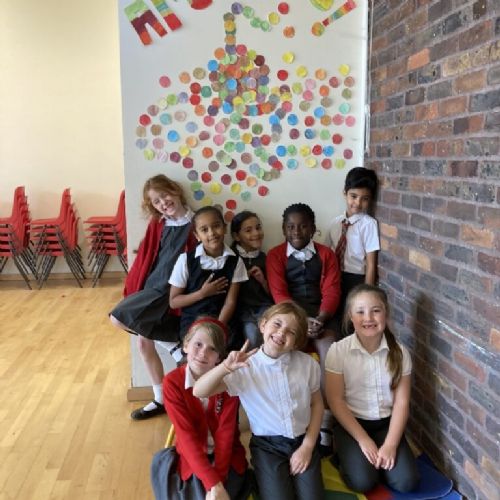Art & Design

Intent
At William Ransom we want every child to know and believe that they are an artist.
Our aim is that every child will leave our school and feel that they have found an area of the visual arts that is relevant and engaging to them. This might be through drawing, making, designing or simply talking about art.
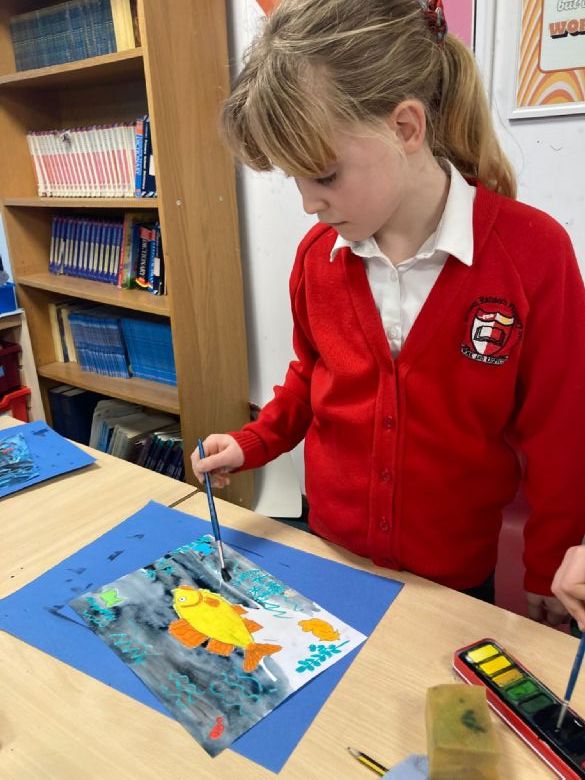 We aim to deliver our curriculum in a holistic way rather than teaching a set of technical skills. We want children to learn through art as well as about art.
We aim to deliver our curriculum in a holistic way rather than teaching a set of technical skills. We want children to learn through art as well as about art.
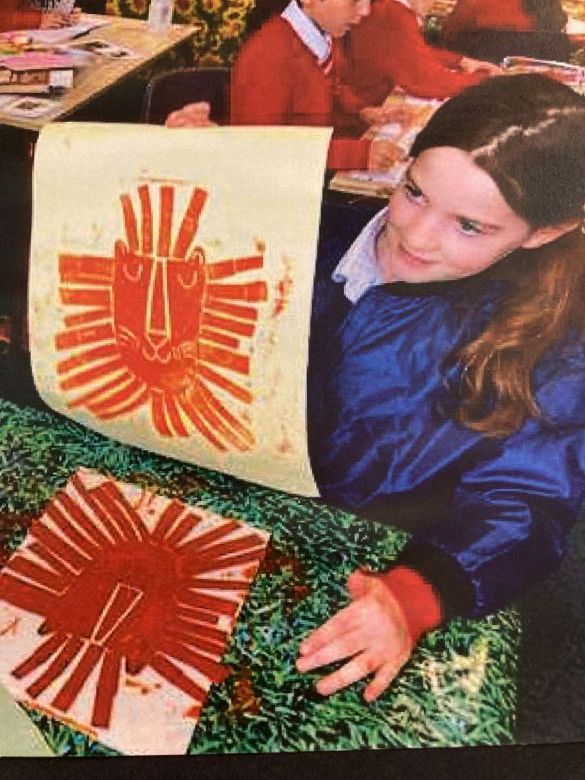 Our intent is to empower our pupils with the skills and confidence to produce creative, imaginative work. We want every child to have lots of different opportunities to explore their ideas, be curious and record their experiences, as well as exploring the work of others and evaluating different creative ideas.
Our intent is to empower our pupils with the skills and confidence to produce creative, imaginative work. We want every child to have lots of different opportunities to explore their ideas, be curious and record their experiences, as well as exploring the work of others and evaluating different creative ideas.
All ideas are encouraged and all art is valued. We want every pupil to feel confident in expressing themselves through their art work and to always enjoy that creative process. The process of creating art underpins our intent with emphasis on the journey rather than the finished product.
At William Ransom our intent is that our pupils will become confident and proficient in a variety of techniques. Pupils will develop their knowledge of a diverse and relevant range of artists and will be encouraged to evaluate that art as a stimulus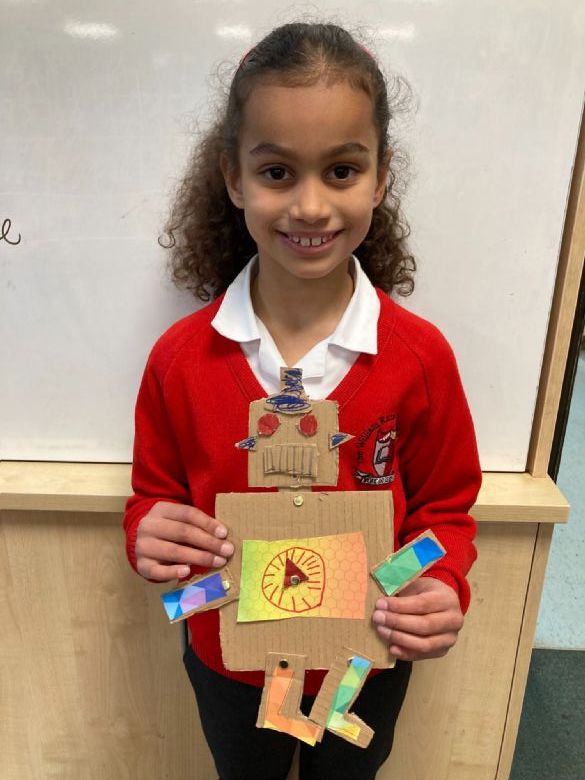 for their own.
for their own.
Children will learn to work independently as well as in collaboration with others.
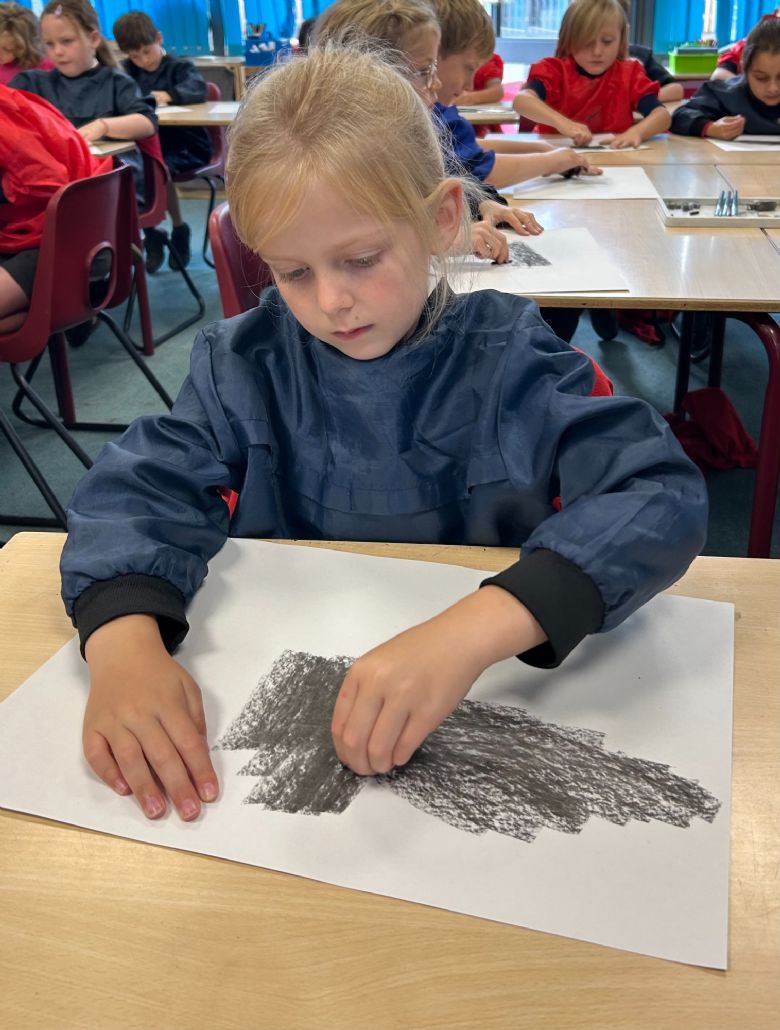
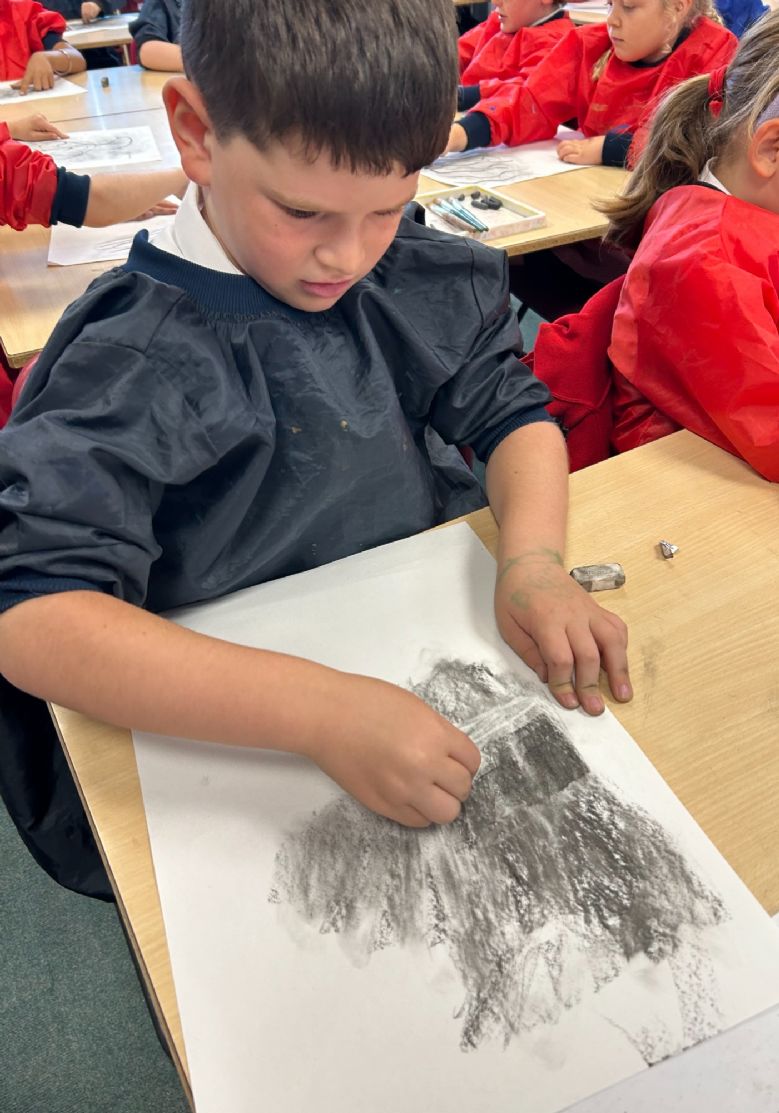
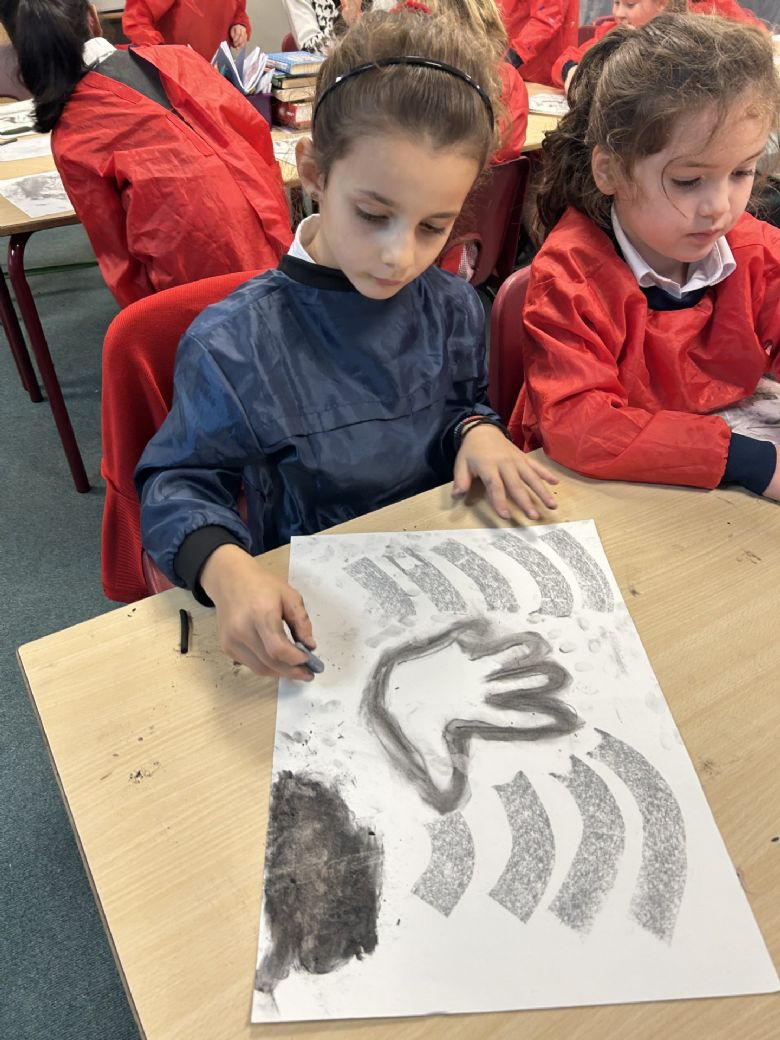
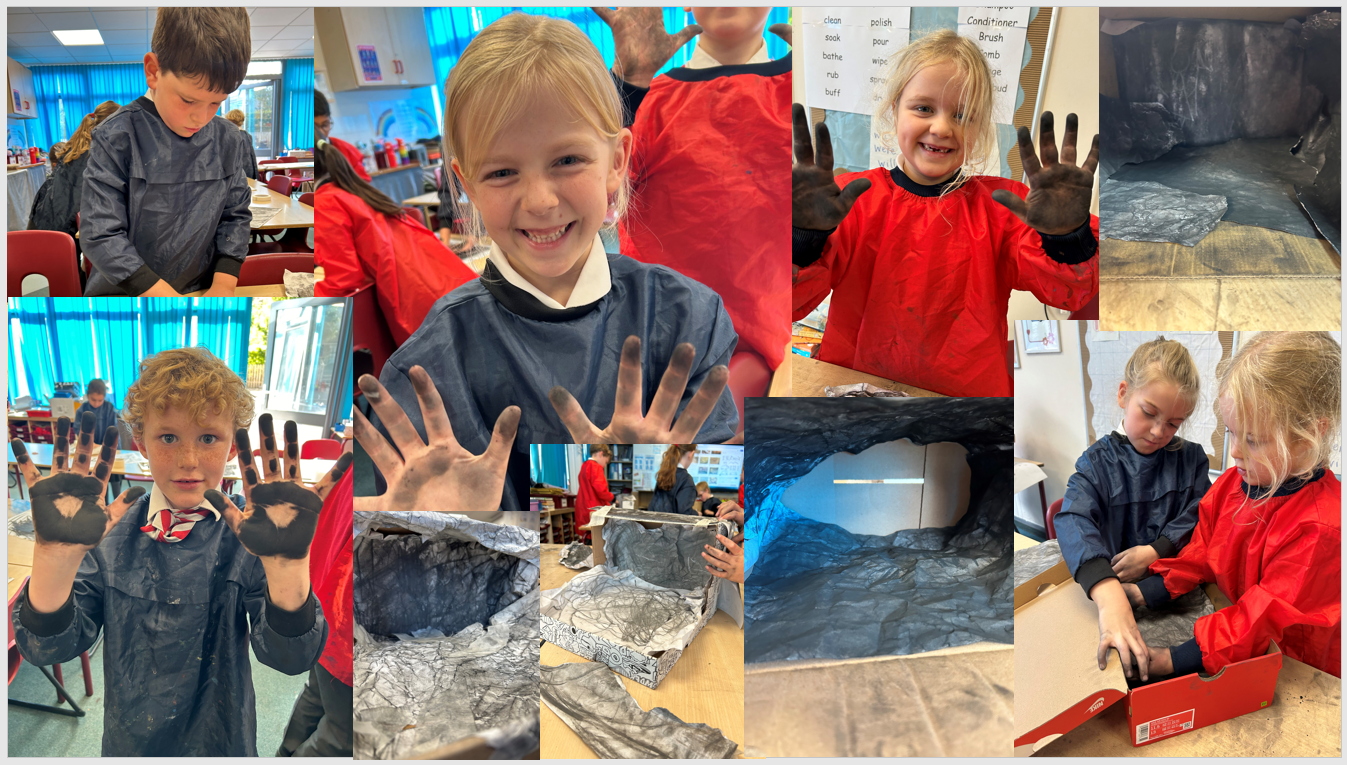
Implementation
National Curriculum
As a school, and in accordance with the National Curriculum’s expectations, we aim to ensure that all pupils at Key Stage One are taught:
- to use a range of materials creatively to design and make products
- to use drawing, painting and sculpture to develop and share their ideas, experiences and imagination
- to develop a wide range of art and design techniques in using colour, pattern, texture, line, shape, form and space
- about the work of a range of artists, craft makers and designers, describing the differences and similarities between different practices and disciplines, and making links to their own work
We aim to ensure that all pupils at at Key Stage Two pupils are taught:
- to develop their techniques, including their control and their use of materials, with creativity, experimentation and an increasing awareness of different kinds of art, craft and design.
- to create sketch books to record their observations and use them to review and revisit ideas
- to improve their mastery of art and design techniques, including drawing, painting and sculpture with a range of materials [for example, pencil, charcoal, paint, clay]
- about great artists, architects and designers in history
Art will be taught for one hour each week through the Access Art Curriculum.
The curriculum is broken down into pathways, one for each half term.
Each pathway tells a story / forms a journey, for both teacher and pupil.
Each pathway follows a particular format which promotes excellent teaching & learning:
Warm-up: Artists: Activity: Crit / Reflection
Artists: Materials: Activity: Crit / Reflection
Challenge or Brief: Artist: Activity: Crit / Reflection
The 36 Pathways follow a repeated rhythm, providing lots of time to balance repeated practice with new experiences, quiet approaches with active and dynamic activities, time to work alone with collaborative and community based activities… all geared to create energy and momentum throughout the year.
We will enrich this curriculum by:
Inviting artists into school to share their knowledge and expertise, when it is possible to do so.
Exhibiting artwork on the school website, in the whole school and classroom displays.
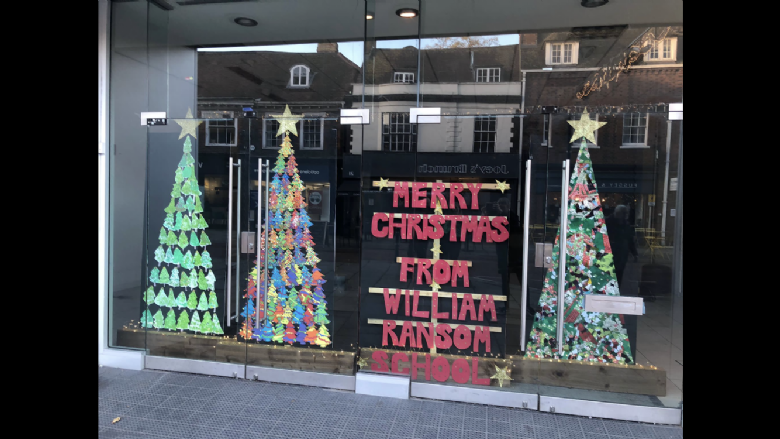
Creating art in our community when possible.
Running a weekly art club.
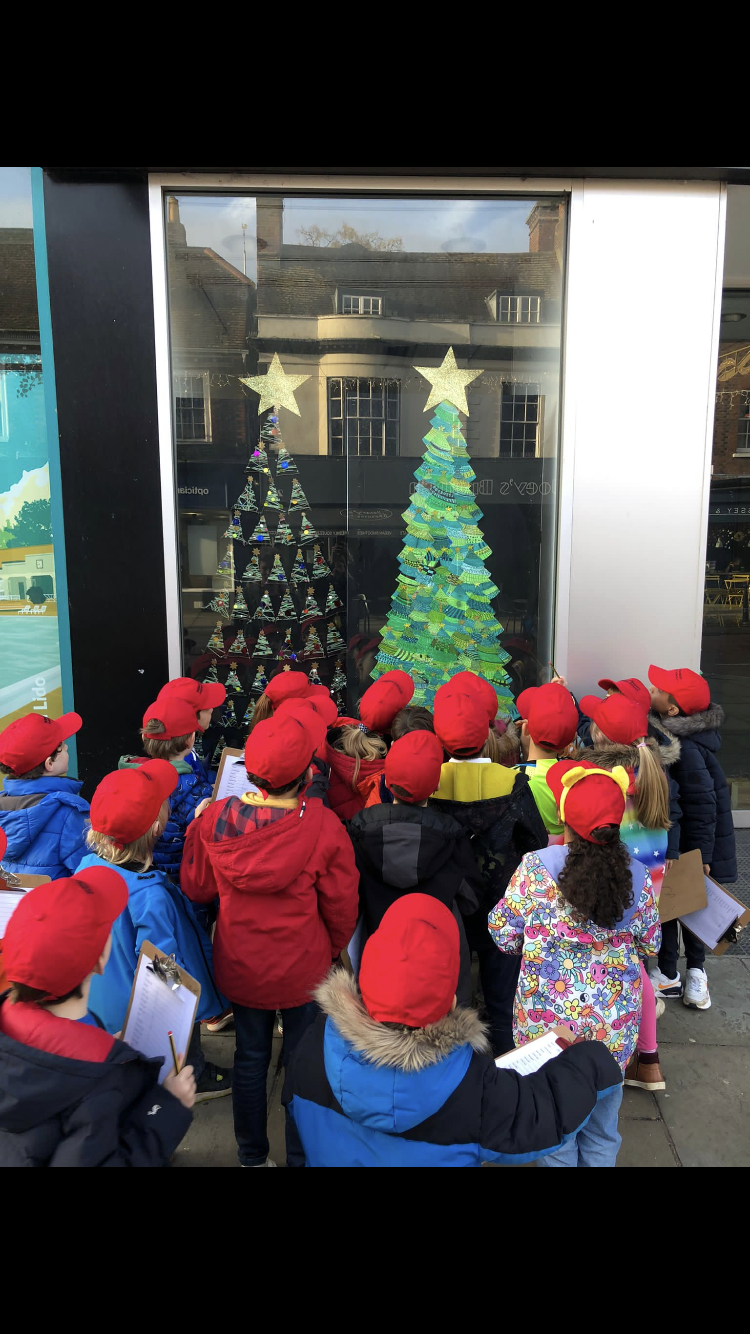
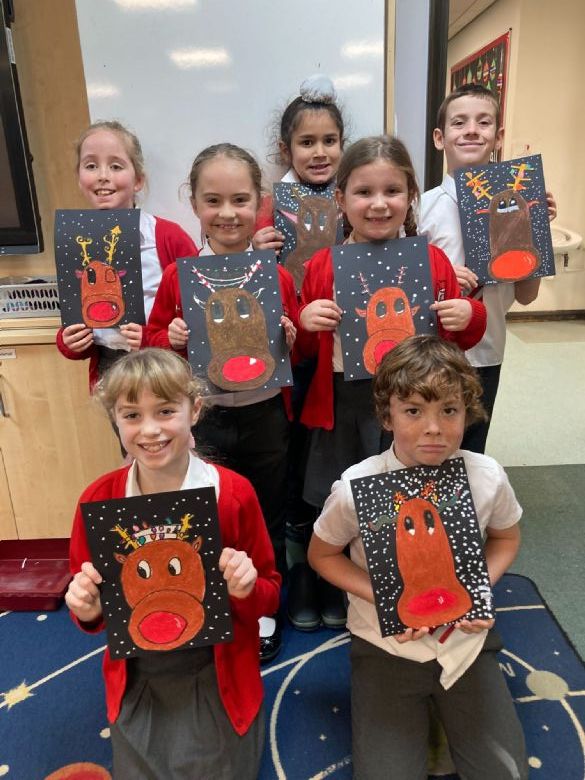
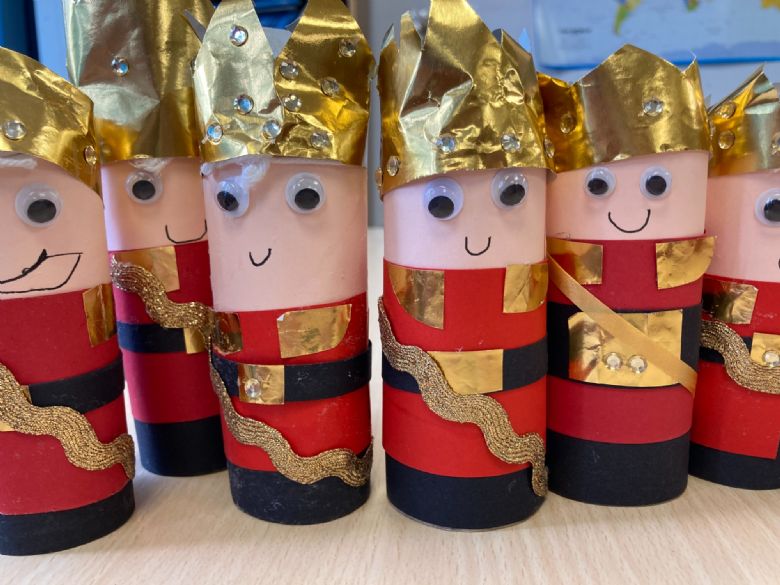
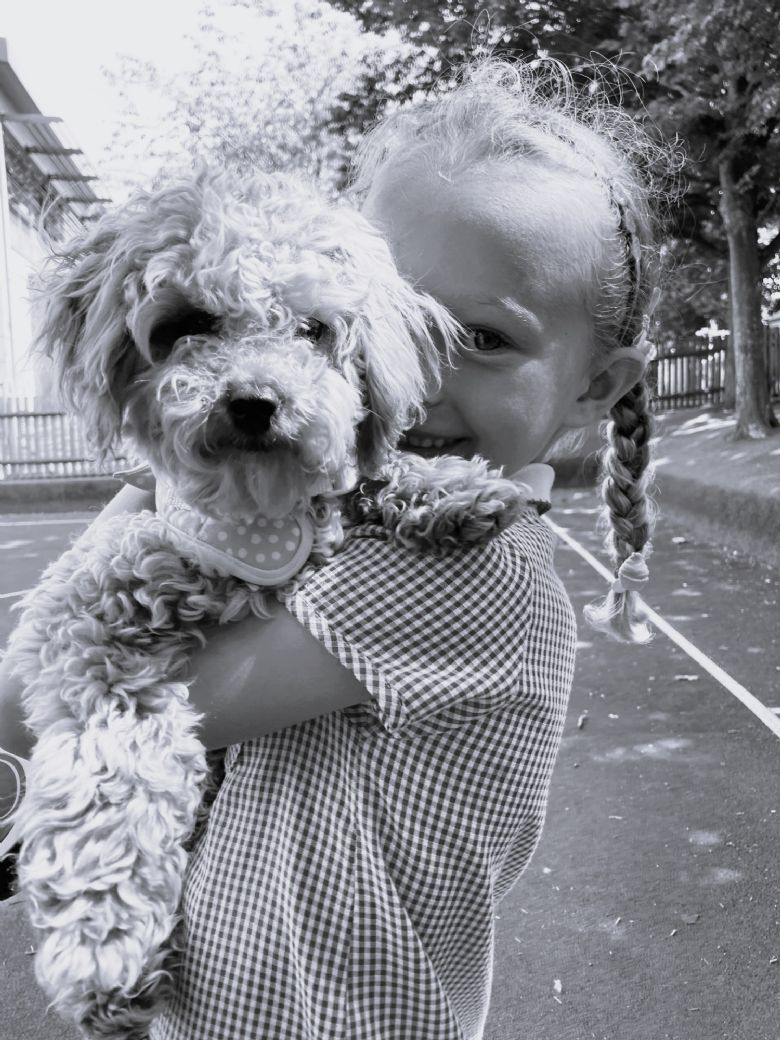
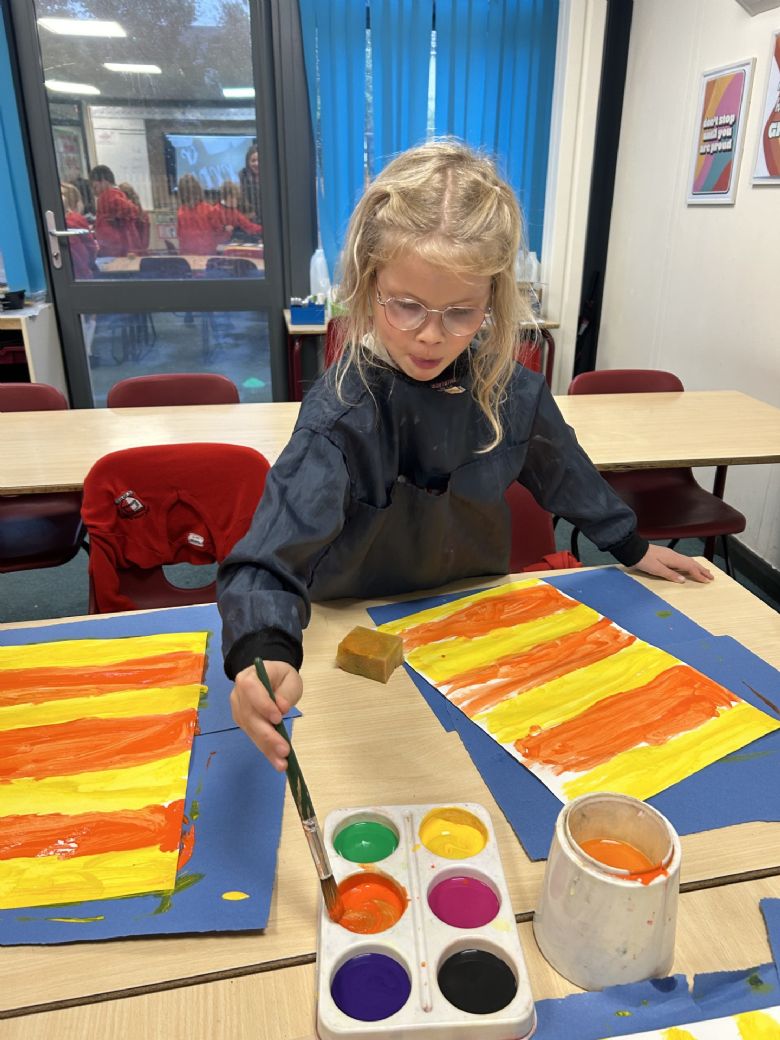
Progression of Skills
|
Year 1 |
www.accessart.org.uk |
|||||
|
Drawing |
Sketchbooks |
Printmaking |
Painting |
Collage |
Making |
Purpose/Visual Literacy/Articulation |
|
Understand drawing is a physical activity. Spirals
Understand there is a relationship between drawings on paper (2d) and making (3d). That we can transform 2d drawings into 3d objects. Making Birds Explore lines made by a drawing tool, made by moving fingers, wrist, elbow, shoulder and body. Work at a scale to accommodate exploration. Spirals
Use colour (pastels, chalks) intuitively to develop spiral drawings. Spirals
Pupils draw from paused film, observing detail using pencil, graphite, handwriting pen. Making Birds Flora & Fauna
Pupils draw from first hand observation, observing detail using materials above plus pastel, oil pastel and or pencil crayon. Simple Printmaking Flora & Fauna |
Introduce what a sketchbook is for. Understand it is owned by the pupil for experimentation and exploration. Spirals Make a simple elastic band sketchbook. Personalise it. Spirals
Use sketchbooks to:
Test out printmaking ideas Simple Printmaking
Develop experience of primary and secondary colours Spirals Simple Printmaking Exploring Watercolour Flora & Fauna
Explore mark making Spirals Simple Printmaking Flora & Fauna Exploring Watercolour Making Birds
|
Understand prints are made by transferring an image from one surface to another. Simple Printmaking Understand relief prints are made when we print from raised images (plates). Simple Printmaking Use hands and feet to make simple prints, using primary colours. Simple Printmaking
Collect textured objects and make rubbings, and press them into plasticine to create plates/prints (relief printing) exploring how we ink up the plates and transfer the image. Simple Printmaking
Explore concepts like “repeat” “pattern” “sequencing”. Simple Printmaking |
Understand watercolour is a media which uses water and pigment. Exploring Watercolour
Understand we can use a variety of brushes, holding them in a variety of ways to make watercolour marks. Exploring Watercolour Explore watercolour in an intuitive way to build understanding of the properties of the medium. Exploring Watercolour
Paint without a fixed image of what you are painting in mind. Exploring Watercolour
Respond to your painting, and try to “imagine” an image within. Exploring Watercolour
Work back into your painting with paint, pen or coloured pencil to develop the imaginative imagery. Exploring Watercolour
|
Understand collage is the art of using elements of paper to make images. Making Birds Flora & Fauna
Understand we can create our own papers with which to collage. Making Birds Flora & Fauna Collage with painted papers exploring colour, shape and composition. Simple Printmaking Flora & Fauna
Combine collage with making by cutting and tearing drawn imagery, manipulating it into simple 3d forms to add to sculpture. Making Birds
|
Understand that sculpture is the name sometimes given for artwork which exists in three dimensions. Playful Making Making Birds
Understand the meaning of “Design through Making” Playful Making Making Birds
Use a combination of two or more materials to make sculpture. Playful Making Making Birds
Use construction methods to build. Playful Making Making Birds
Work in a playful, exploratory way, responding to a simple brief, using Design through Making philosophy. Playful Making Making Birds
|
Look at the work of artists who draw, sculptors, and painters, listening to the artists’ intention behind the work and the context in which it was made.
Understand we may all have different responses in terms of our thoughts and the things we make. That we may share similarities. Understand all responses are valid.
Reflect upon the artists’ work, and share your response verbally (“I liked…”).
Present your own artwork (journey and any final outcome), reflect and share verbally (“I enjoyed… This went well”).
Some children may feel able to share their response about classmates work.
|
|
Year 2 |
www.accessart.org.uk |
|||||
|
Drawing |
Sketchbooks |
Printmaking |
Painting |
Collage |
Making |
Purpose/Visual Literacy/Articulation |
|
Understand that we can use different media (sometimes combined in one drawing) to capture the nature of things we find. Explore & Draw
Understand that we can hold our drawing tools in a variety of ways, experimenting with pressure, grip and speed to affect line. Explore & Draw Visit local environment, collect natural objects, explore composition and qualities of objects through arranging, sorting & representing. Photograph. Explore & Draw
Use drawing exercises to focus an exploration of observational drawing (of objects above) combined with experimental mark making, using graphite, soft pencil, handwriting pen. Explore & Draw Be an Architect
Work with care and focus, enjoying making drawings which are unrushed. Explore quality of line, texture and shape. Explore & Draw Music & Art Explore Through Monoprint
Create final collaged drawings (see column 5 “collage”) which explore composition. Explore & Draw Music & Art
Make drawings inspired by sound. Music & Art |
Continue to build understanding that sketchbooks are places for personal experimentation.
Understand that the way each persons’ sketchbook looks is unique to them. All Pathways for Year 2
Make a new sketchbook (Elastic Band of Hole Punch) OR make Spaces and Places inside a bought sketchbook. Explore & Draw Make a new sketchbook (Elastic Band of Hole Punch) OR make Spaces and Places inside a bought sketchbook. Explore & Draw
Work in sketchbooks to:
Explore the qualities of different media. Explore & Draw Explore Through Monoprint Be an Architect Music & Art
|
Understand mono prints or mono types are prints made by drawing through an inked surface, transferring the marks on to another sheet. Explore Through Monoprint Transfer the skills learnt in drawing and sketchbooks to mono print by making monoprints using carbon copy paper (and or oil pastel prints), exploring the qualities of line. Explore Through Monoprint |
Understand that some painters use expressive, gestural marks in their work, often resulting in abstract, expressionist painting. Expressive Painting
Understand that the properties of the paint that you use, and how you use it, will affect your mark making. Expressive Painting
Understand that primary colours can be mixed together to make secondary colours of different hues. Expressive Painting Music & Art
Understand the concept of still life. Expressive Painting Explore colour mixing through gestural mark making, initially working without a subject matter to allow exploration of media. Experiment with using home made tools. Expressive Painting
Create an arrangement of objects or elements. Use as the focus for an abstract still life painting using gestural marks using skills learnt above. Expressive Painting |
Understand that we can combine collage with other disciplines such as drawing, printmaking and making. Explore & Draw Use the observational drawings made (see column 1 “drawing”), cutting the separate drawings out and using them to create a new artwork, thinking carefully about composition. Work into the collage with further drawing made in response to the collaged sheet. Explore & Draw
Collage with drawings to create invented forms. Combine with making if appropriate. Explore & Draw Music & Art |
Understand the role of an architect. Be an Architect
Understand when we make sculpture by adding materials it is called Construction. Be an Architect Stick Transformation Project Use the Design through Making philosophy to construct with a variety of materials to make an architectural model of a building, considering shape, form, colour, and perspective. Consider interior and exterior. Be an Architect
Use Design through Making philosophy to playfully construct towards a loose brief. Be an Architect Stick Transformation Project Music & Art
Transform found objects into sculpture, using imagination and construction techniques including cutting, tying, sticking. Think about shape (2d), form (3d), texture, colour and structure. Stick Transformation Project |
Understand artists take their inspiration from around them, collecting and transforming.
Understand that in art we can experiment and discover things for ourselves.
Look at the work of a printmaker, an architect, and artists and learn to dissect their work to help build understanding. Understand how the artists experience feeds into their work.
Understand we may all have different responses in terms of our thoughts and the things we make. That we may share similarities. Understand all responses are valid. All Pathways for Year 2 Reflect upon the artists’ work, and share your response verbally (“I liked…”).
Present your own artwork (journey and any final outcome), reflect and share verbally (“I enjoyed… This went well”).
Talk about intention.
Share responses to classmates work, appreciating similarities and differences.
Document work using still image (photography) or by making a drawing of the work. If using photography consider lighting and focus. Some children may make films thinking about viewpoint, lighting & perspective. All Pathways for Year 2 |
|
Year 3 |
www.accessart.org.uk |
|||||
|
Drawing |
Sketchbooks |
Printmaking |
Painting |
Collage |
Making |
Purpose/Visual Literacy/Articulation |
|
Understand that charcoal is a drawing medium that lends itself to loose, gestural marks made on a larger scale. Gestural Drawing with Charcoal
Understand charcoal and earth pigment were our first drawing tools as humans. Gestural Drawing with Charcoal
Know that Chiaroscuro means “light/dark” and we can use the concept to explore tone in drawings. Gestural Drawing with Charcoal
Understand that animators make drawings that move. Make marks using charcoal using hands as tools. Explore qualities of mark available using charcoal. Gestural Drawing with Charcoal
Make charcoal drawings which explore Chiaroscuro and which explore narrative/drama through lighting/shadow (link to drama). Gestural Drawing with Charcoal
Option to explore making gestural drawings with charcoal using the whole body (link to dance). Gestural Drawing with Charcoal
Develop mark making skills by deconstructing the work of artists. Cloth, Thread, Paint
Use imaginative and observational drawing skills to make drawings of people/animals which can be animated. Consider background, foreground and subject. Animated Drawings |
Continue to build understanding that sketchbooks are places for personal experimentation. All Pathways for Year 3
Understand that the way each persons’ sketchbook looks is unique to them. All Pathways for Year 3
Make a new sketchbook (Elastic Band of Hole Punch) OR make Spaces and Places inside a bought sketchbook. All Pathways for Year 3 Work in sketchbooks to:
Explore the qualities of charcoal. Gestural Drawing with Charcoal
|
Understand that screen prints are made by forcing ink over a stencil. Working with Shape & Colour
Understand that mono print can be used effectively to create prints which use line. That screen prints can be used to create prints which use thicker lines and / or shapes. Working with Shape & Colour Use mono print or screen print over collaged work to make a creative response to an original artwork. Consider use of layers to develop meaning. Working with Shape & Colour |
Understand that we can create imagery using natural pigments and light. Telling Stories
Understand that paint acts differently on different surfaces. Cloth, Thread, Paint
Understand the concept of still life and landscape painting. Cloth, Thread, Paint Use paint, mixing colours, to complete the sculpture inspired by literature (see column 6 “making”). Telling Stories
Continue to develop colour mixing skills. Cloth, Thread, Paint Natural Materials
Explore painting over different surfaces, e.g. cloth, and transfer drawing mark making skills into thread, using stitch to draw over the painted fabric. Cloth, Thread, Paint
Explore creating pigments from materials around you (earth, vegetation). Use them to create an image which relates to the environment the materials were found in. Natural Materials
Option to use light to create imagery by exploring anthotype or cyanotype. Natural Materials |
Understand that we can combine collage with other disciplines such as drawing, printmaking and making. Working with Shape & Colour Cut shapes from paper (free hand) and use as elements with which to collage, combined with printmaking (see column 3 “printmaking”) to make a creative response to an original artwork. Explore positive and negative shapes, line, colour and composition. Working with Shape & Colour |
Understand that many makers use other artforms as inspiration, such as literature, film, drama or music. Telling Stories
Understand that when we make sculpture by moulding with our fingers it is called modelling (an additive process). Telling Stories
That clay and Modroc are soft materials which finally dry/set hard. Telling Stories
An armature is an interior framework which support a sculpture. Telling Stories
Understand that articulated drawings can be animated. Animated Drawings Use Modroc or air dry clay to model characters inspired by literature. Consider form, texture, character, structure. Telling Stories
Make an armature to support the sculpture. Telling Stories
Cut out drawings and make simple articulations to make drawings which can be animated. Combine with digital media to make animations. Animated Drawings |
To understand that visual artists look to other artforms for inspiration.
Understand artists often collaborate on projects, bringing different skills together.
Deconstruct and discuss an original artwork, using the sketchbooks to make visual notes to nurture pupils own creative response to the work.
Understand we may all have different responses in terms of our thoughts and the things we make. That we may share similarities. Understand all responses are valid. All Pathways for Year 3 Reflect upon the artists’ work, and share your response verbally (“I liked… I didn’t understand… it reminded me of…”).
Present your own artwork (journey and any final outcome), reflect and share verbally (“I enjoyed… This went well… I would have liked… next time I might...). Talk about intention.
Work collaboratively to present outcomes to others where appropriate. Present as a team.
Share responses to classmates work, appreciating similarities and differences. Listen to feedback about your own work and respond.
Document work using still image (photography) or by making a drawing of the work. If using photography consider lighting and focus. Some children may make films thinking about viewpoint, lighting & perspective. All Pathways for Year 3 |
|
Year 4 |
www.accessart.org.uk |
|||
|
Drawing |
Sketchbooks |
Painting |
Making |
Purpose/Visual Literacy/Articulation |
|
Understand that artists and illustrators interpret narrative texts and create sequenced drawings. Storytelling Through Drawing
Understand artists can work with pattern for different reasons: Understand Surface Pattern Designers work to briefs to create patterns for products: Artists work with pattern to create paintings or other works. Exploring Pattern
Understand working with pattern uses lots of different concepts including repetition, sequencing, symmetry. Exploring Pattern
Understand that patterns can be purely decorative or hold symbolic significance. They can be personal or cultural. Exploring Pattern Create owned narratives by arranging toys in staged scenes, using these as subject matter to explore creation of drawings using charcoal and chalk which convey drama and mood. Use light and portray light/shadow. Storytelling Through Drawing
Interpret poetry or prose and create sequenced images in either an accordian or poetry comic format. Work in a variety of media according to intention, including handwriting pen, graphite or ink. Storytelling Through Drawing
Use colour, composition, elements, line, shape to create pattern working with tessellations, repeat pattern or folding patterns. Exploring Pattern Use a variety of drawing media including charcoal, graphite, wax resist and watercolour to make observational and experimental drawings. To feel able to take creative risks in pursuit of creating drawings with energy and feeling. Storytelling Through Drawing |
Understand that artists use sketchbooks for different purposes and that each artist will find their own ways of working in a sketchbook. All Pathways for Year 4 Use sketchbooks to:
Practise drawing skills. Storytelling Through Drawing Exploring Pattern Exploring Still Life Sculpture & Structure Festival Feasts
Brainstorm and explore ideas relating to performance art. Art of Display |
Understand that still life name given to the genre of painting (or making) a collection of objects/elements. Exploring Still Life
That still life is a genre which artists have enjoyed for hundreds of years,, and which contemporary artists still explore today. Exploring Still Life To explore colour (and colour mixing), line, shape, pattern and composition in creating a still life. To consider lighting, surface, foreground and background. Exploring Still Life
To use close observation and try different hues and tones to capture 3d form in 2 dimensions. (Option to use collage from painted sheets). Exploring Still Life
Options to work in clay, making reliefs inspired by fruit still lives, or make 3d graphic still lives using ink and foamboard. Exploring Still Life
To explore painting on different surfaces, e.g. fabric, and combine paint with 3d making. Festival Feasts
To make work as part of a community/class and understand how everyone can contribute towards a larger artwork. Festival Feasts |
Understand that a plinth is a device for establishing the importance or context of a sculptural object. Art of Display
Understand that artists can re-present objects, in a particular context with a particular intention, to change the meaning of that object. Art of Display
To understand that sometimes people themselves can be the object, as in performance art. Art of Display
To understand that make sculpture can be challenging. To understand its takes a combination of skills, but that we can learn through practice. That it is ok to take creative risks and ok if things go wrong as well as right. Sculpture & Structure Festival Feasts Explore how we can re-see the objects around us and represent them as sculptures. That we can use scale to re-examine our relationship to the things around us. Art of Display
To work in collaboration to explore how we can present ourselves as art object, using a plinth as a device to attract attention to us. Art of Display
To construct sculptural self portraits of ourselves on a plinth, using a variety of materials including fabric. Art of Display
Develop our construction skills, creative thinking and resilience skills by making sculpture which combines lots of materials. Use tools to help us construct and take creative risks by experimenting to see what happens. Use Design through Making philosophy and reflect at all stages to inform future making. Sculpture & Structure Festival Feasts
To combine modelling with construction using mixed media and painting to create sculpture. Festival Feasts
|
Look at the work of illustrators and graphic artists, painters and sculptors. Understand the processes, intentions an outcomes of different artists, using visual notes in a sketchbook to help consolidate and own the learning.
Understand artists often collaborate on projects, bringing different skills together.
Deconstruct and discuss an original artwork, using the sketchbooks to make visual notes to nurture pupils own creative response to the work.
Understand we may all have different responses in terms of our thoughts and the things we make. That we may share similarities. Understand all responses are valid. All Pathways for Year 4 Reflect upon the artists’ work, and share your response verbally (“I liked… I didn’t understand… it reminded me of… It links to…”).
Present your own artwork (journey and any final outcome), reflect and share verbally (“I enjoyed… This went well… I would have liked… next time I might.. I was inspired by….). Talk about intention.
Work collaboratively to present outcomes to others where appropriate. Present as a team.
Share responses to classmates work, appreciating similarities and differences. Listen to feedback about your own work and respond.
Document work using still image (photography) or by making a drawing of the work. If using photography consider lighting and focus. Some children may make films thinking about viewpoint, lighting & perspective. All Pathways for Year 4 |
|
Year 5 |
www.accessart.org.uk |
||||
|
Drawing |
Sketchbooks |
Printmaking |
Painting |
Making |
Purpose/Visual Literacy/Articulation |
|
Understand that designers create fonts and work with Typography. Typography & Maps
Understand that some artists use graphic skills to create pictorial maps, using symbols (personal and cultural) to map identity as well as geography. Typography & Maps Create fonts inspired by objects/elements around you. Use close observational drawing with pen to inspire, and use creative skills to transform into letters. Typography & Maps
Draw over maps/existing marks to explore how you can make mark making more visually powerful. Typography & Maps
Combine drawing with making to create pictorial / 3 dimension maps which explore qualities of your personality or otherwise respond to a theme. Explore line weight, rhythm, grip, mark making and shape, and explore how 2d can become 3d through manipulation of paper. Typography & Maps
Use charcoal, graphite, pencil, pastel to create drawings of atmospheric “sets” to help inform (though not design) set design (see column 6 “making”). Set Design |
Use sketchbooks to:
Explore mark making. Typography & Maps Mixed Media Landscapes Set Design Fashion Design
Brainstorm ideas generated when reading poetry or prose. Making MonoTypes Set Design
Make visual notes to capture, consolidate and reflect upon the artists studied. Typography & Maps Making MonoTypes Mixed Media Landscapes Set Design Architecture: Big or Small Fashion Design
Explore ideas relating to design (though do not use sketchbooks to design on paper), exploring thoughts about inspiration source, materials, textures, colours, mood, lighting etc. Set Design Architecture: Big or Small Fashion Design
Experiment with different media and different marks to capture the energy of a landscape. Explore colour, and colour mixing, working intuitively to mix hues and tints, but able to articulate the processes involved. Mixed Media Landscapes
Experiment with colour mixing and pattern, working towards creating paper “fabrics” for fashion design. Fashion Design
|
Understand that mono types are single monoprints. Understand that artists sometimes use printmaking to create a larger artwork, e.g. an installation or an artists book. Making MonoTypes Combine mono type with painting and collage to make an “artists book” inspired by poetry or prose. Explore colour, mixing different hues, and explore composition, working with different shaped elements, before using mono print to layer lines and marks. Making MonoTypes |
Understand that there is a tradition of artists working from land, sea or cityscapes. That artists use a variety of media to capture the energy of a place, and that artists often work outdoors to do this. Mixed Media Landscapes See column 3 “printmaking” to explore how print is combined with paint and collage to create a cohesive artwork. Making MonoTypes
Explore how you can you paint (possibly combined with drawing) to capture your response to a place. Explore how the media you choose, combined with the marks you make and how you use your body will affect the end result. Think about colour, composition and mark making. Think about light and dark, movement and energy. Mixed Media Landscapes
Mix colour intuitively to create painted sheets. Use pattern to decorate, working with more paint or ink. Transform these 2d patterned sheets into 3d forms or collaged elements to explore fashion design (see column 6 “making”). Fashion Design |
Understand that set designers can design/make sets for theatres or for animations. Set Design
Understand that designers often create scaled models to test and share ideas with others. Set Design
Understand that architects and other artists have responsibilities towards society. Understand that artists can help shape the world for the better. Architecture: Big or Small Fashion Design Use Design through Making, inspired by a brief, to create a scale model “set” for a theatre production or an animation. Set Design
Construct with a variety of media, using tools. Think about scale, foreground, background, lighting, texture, space, structure and intention. Set Design
Use Design through Making and scale models to create a piece of architecture which would make the world a better place. Use a combination of materials, construction methods and tools. Reflect as part of the building process so that you can understand how your intention relates to the reality of what you are building. Architecture: Big or Small
Option to work in 3d to devise fashion constructed from patterned papers. Fashion Design |
Look at the work of designers, artists, animators, architects.
Understand the processes, intentions an outcomes of different artists, using visual notes in a sketchbook to help consolidate and own the learning.
Understand we may all have different responses in terms of our thoughts and the things we make. That we may share similarities. Understand all responses are valid. All Pathways for Year 5 Reflect upon the artists’ work, and share your response verbally (“I liked… I didn’t understand… it reminded me of… It links to…”).
Present your own artwork (journey and any final outcome), reflect and share verbally (“I enjoyed… This went well… I would have liked… next time I might.. I was inspired by….). Talk about intention.
Work collaboratively to present outcomes to others where appropriate. Present as a team.
Share responses to classmates work, appreciating similarities and differences. Listen to feedback about your own work and respond.
Document work using still image (photography) or by making a drawing of the work. If using photography consider lighting and focus. Some children may make films thinking about viewpoint, lighting & perspective.
Discuss the ways in which artists have a responsibility to themselves/society. What purpose does art serve? All Pathways for Year 5
|
|
Year 6 |
www.accessart.org.uk |
||||
|
Drawing |
Sketchbooks |
Printmaking |
Painting |
Making |
Purpose/Visual Literacy/Articulation |
|
Understand that there is often a close relationship between drawing and making. Understand that we can transform 2d drawings into 3d objects. 2D to 2D
Understand that graphic designers use typography and image to create packaging which we aspire to use. 2D to 2D
Understand that there are technical processes we can use to help us see, draw and scale up our work. 2D to 2D Explore using negative and positive space to “see” and draw a simple element/object. 2D to 2D
Use the grid system to scale up the image above, transferring the image onto card. 2D to 2D
Use collage to add tonal marks to the “flat image”. 2D to 2D |
Use sketchbooks to:
Practise seeing negative and positive shapes. 2D to 2D Activism
Using the grid method to scale up an image. 2D to 2D
Explore what your passions, hopes and fears might be. What makes you you? How can you find visual equivalents for the words in your head? Activism Exploring Identity
Explore colour: make colours, collect colours, experiment with how colours work together. Activism Brave Colour
Explore combinations and layering of media. Activism Exploring Identity
Develop Mark Making Activism 2D to 2D Exploring Identity Shadow Puppets
Make visual notes to capture, consolidate and reflect upon the artists studied. Activism 2D to 2D Exploring Identity Brave Colour Take a Seat Shadow Puppets |
Understand that artists sometimes use their skills, vision and creativity to speak on behalf of communities they represent, to try to change the world for the better. Activism
Understand that the nature of the object (artwork in gallery, graffiti on wall, zine) can be specific to the intention of the artist. Activism Explore what kinds of topics or themes YOU care about. Articulate your fears, hopes, dreams. Think about what you could create (possibly working collaboratively) to share your voice and passion with the world. Activism Exploring Identity
Use screenprinting and/or monoprinting over collaged and painted sheets to create your piece of activist art. Activism
Or create a zine using similar methods. Activism
|
Understand that the fabrics used to make clothes have been designed by someone. That there is a relationship between td shape and pattern and 3d form and function. Explore how we can use layers (physical or digital) to explore and build portraits of ourselves which explore aspects of our background, experience, culture and personality. Exploring Identity
Make independent decisions as to which materials are best to use, which kinds of marks, which methods will best help you explore. Exploring Identity
|
Understand that artists use a variety of media including light and sound as well as physical media to create installations. Understand that installations are often immersive, enabling the viewer to enter the artwork. Brave Colour
Understand that designers & makers sometimes work towards briefs, but always brings their own experience in the project to bear. Exploring Identity Take a Seat
Understand that artists and designers add colour, texture, meaning and richness to our life. Brave Colour Exploring Identity Take a Seat
Understand that artists reinvent. Understand that as artists, we can take the work of others and re-form it to suit us. That we can be inspired by the past and make things for the future. Take a Seat Shadow Puppets Use the device of scaled model to imagine what your installation might be, working in respond to a brief or “challenge” to enable a viewer to “have a physical experience of colour.” Brave Colour
Use a variety of materials, including light and sound, to make a model of what you would build. Think about structure of space, how the viewer would enter, what they would see, feel, hear. Use colour in a brave and bold way, reflecting upon how this might make the viewer feel. Brave Colour
Use a variety of materials to design (through making) and construct a scaled piece of furniture. Bring your personality and character to the piece. Let your nature inform the choice of materials and shapes you use. Take a Seat
Combine making with drawing skills to create shadow puppets using cut and constructed lines, shapes and forms from a variety of materials. Working collaboratively to perform a simple show sharing a narrative which has meaning to you. Shadow Puppets
|
Look at the work of designers, artists, art activists, installation artists, craftspeople and puppeteers.
Understand that artists use art to explore their own experience, and that as viewers we can use our visual literacy skills to learn more about both the artist and ourselves.
Understand we may all have different responses in terms of our thoughts and the things we make. That we may share similarities. Understand all responses are valid. All Pathways for Year 6 Reflect upon the artists’ work, and share your response verbally (“I liked… I didn’t understand… it reminded me of… It links to…”).
Present your own artwork (journey and any final outcome), reflect and share verbally (“I enjoyed… This went well… I would have liked… next time I might.. I was inspired by….). Talk about intention.
Work collaboratively to present outcomes to others where appropriate. Present as a team.
Share responses to classmates work, appreciating similarities and differences. Listen to feedback about your own work and respond.
Document work using still image (photography) or by making a drawing of the work. If using photography consider lighting and focus. Some children may make films thinking about viewpoint, lighting & perspective. All Pathways for Year 6 |
Sketch Books
At Key Stage 2 the use of sketch books allow pupils to develop ideas and basic skills that they will apply to their work. Work in sketchbooks links to final pieces with pupil’s development seen through practice and experimentation.
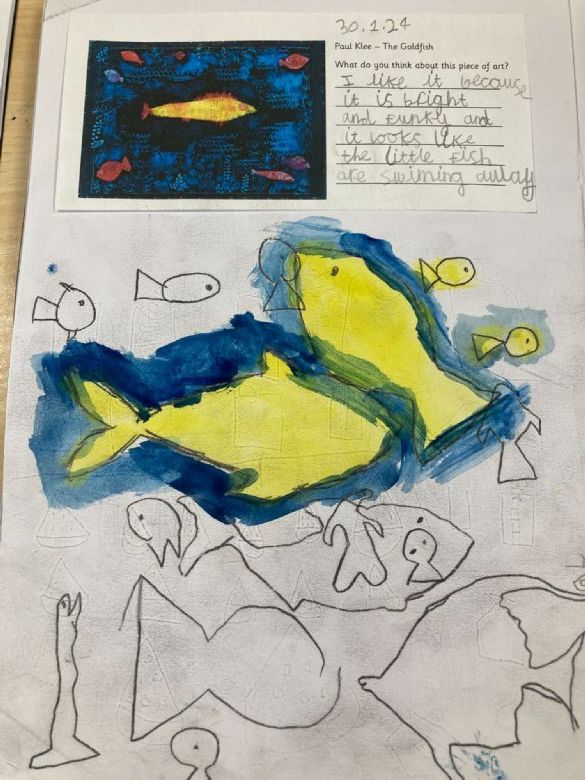
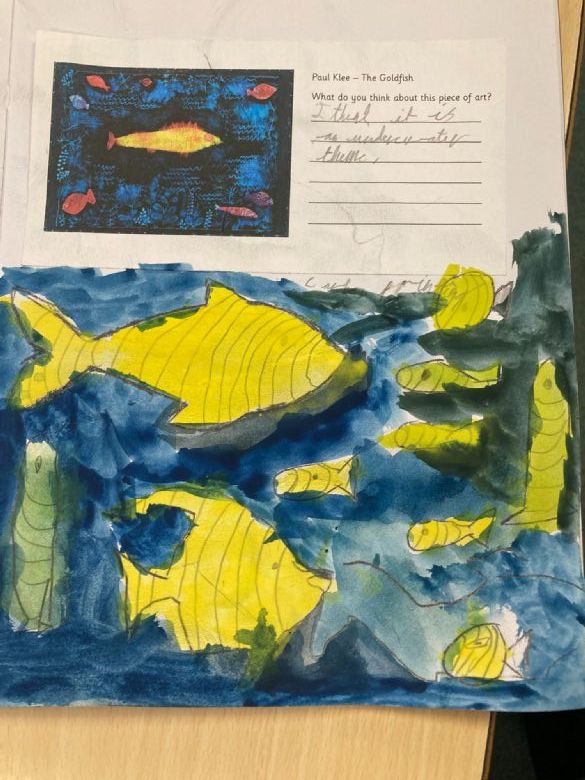
Visiting artists and art themed days
As well as timetabled art lessons, we enrich our curriculum through themed art days where we invite visiting artists to lead workshops and assemblies.
These inspire, engage and challenge our pupils. They allow the children to try new techniques and expand their knowledge through an immersive and practical experience.
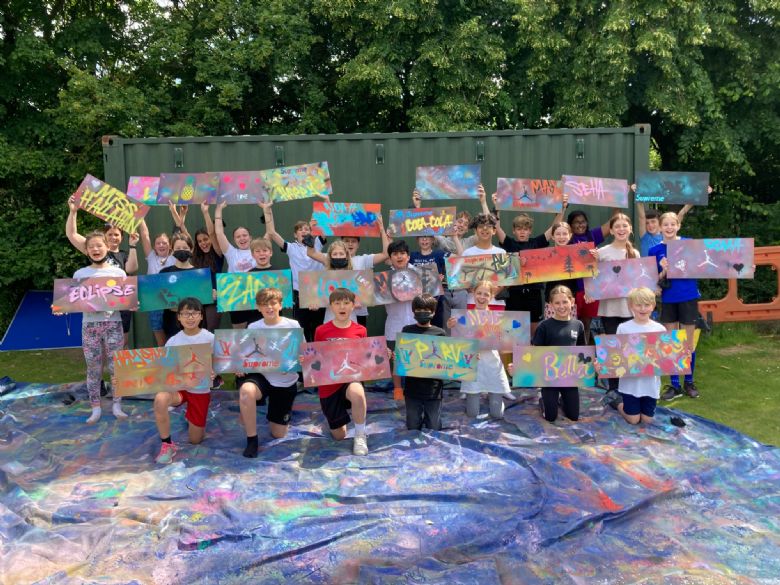
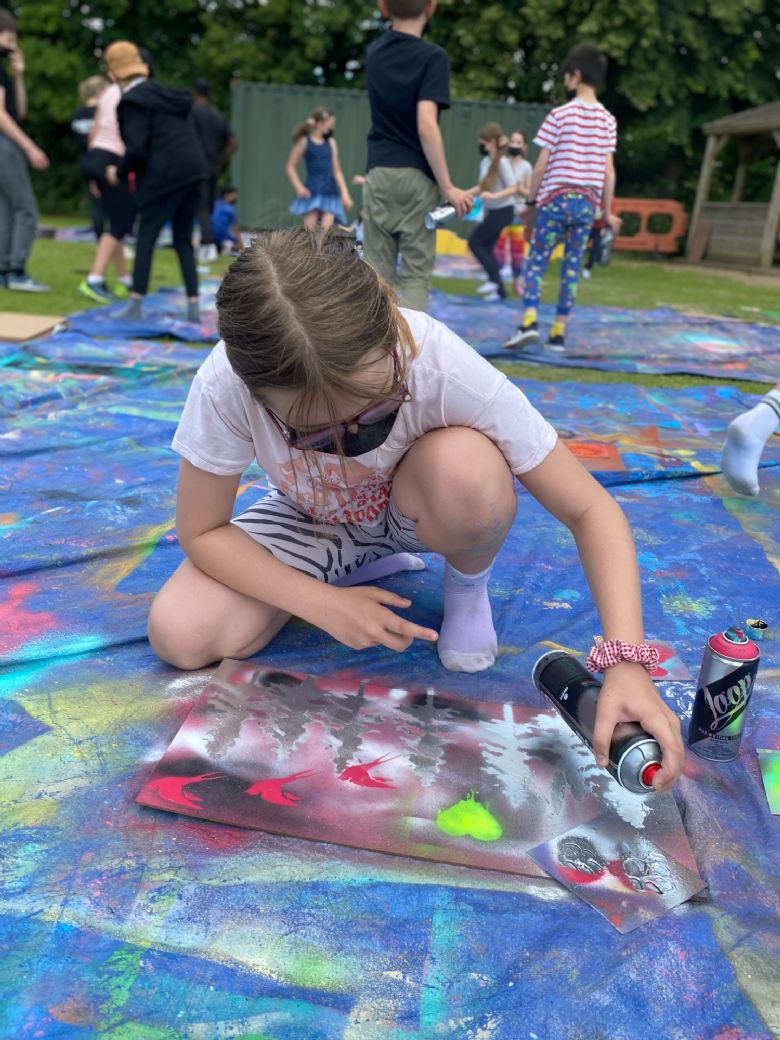
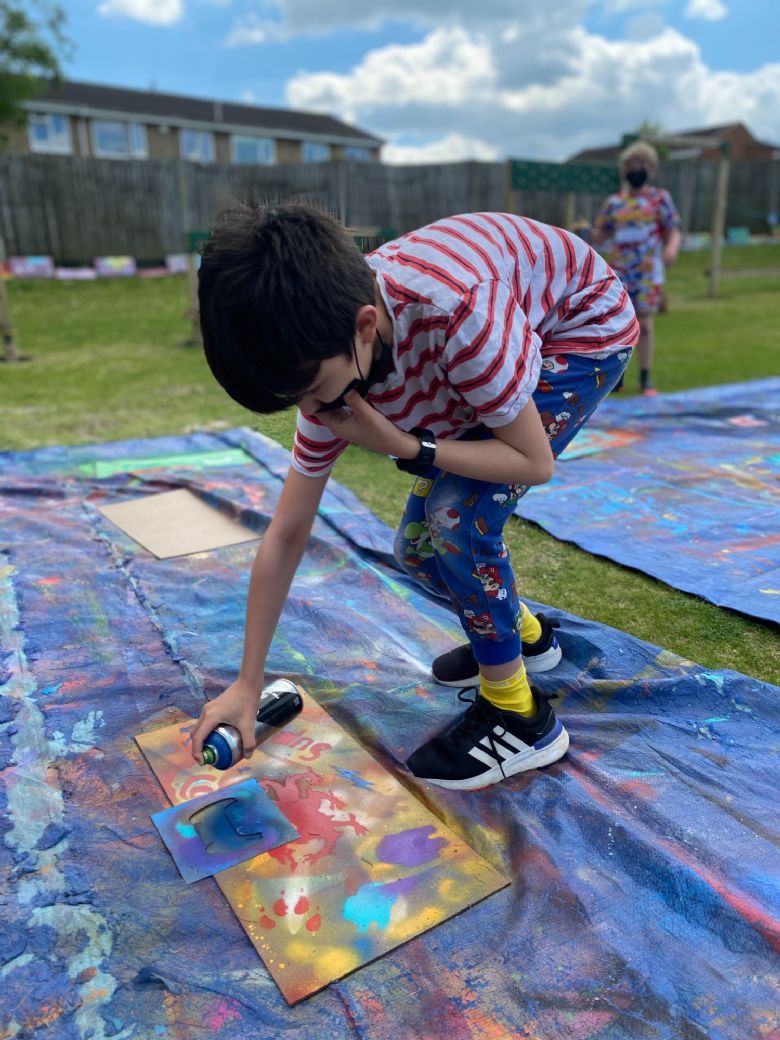
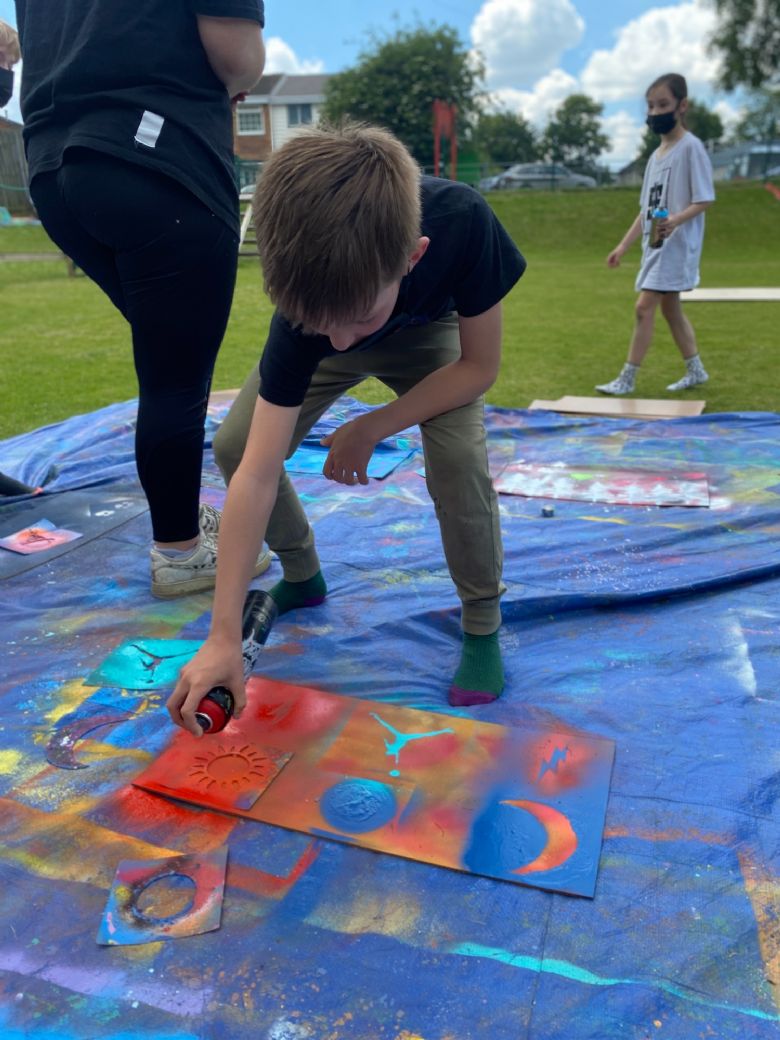
Art Club
We run a weekly art club. Our art club aims to give our pupils the freedom to create art either individually or collaboratively. We draw on the work of other artists and the art techniques being taught in school and strive for this club to be child led. The children choose the art they want to create.
SEND
How Do We Plan Art for Pupils with SEND/Disabilities?
These are some, but not all, of the ways we adapt Art to remove any barriers
- Sensory breaks
- Chunking information
- Liaison with TA’s and support staff
- Visual stimuli/instructions
- Active learning
- Use of technology
- Modelling
- Social stories where appropriate
- Pre teaching/Post teaching
- Careful partnering/positioning
- Use of adapted materials eg a thicker or thinner brush
- Encourage involvement at all levels using personal interests to stimulate participation
- Liaison with parents/carers
- Outcomes determined by the child – no right or wrong
- Capturing reflections and opinions in speech written by supporting adults
- Explicit valuing the process rather than a focus on outcome – this is an Art focus for all pupils
- A chosen scheme of work that provides sensitively adapted resources and recognises the need for all pupils to benefit from their resources and ethos.
Assessment
There are no national standards in Primary Art and Design, so we encourage gentle, ongoing assessment based upon lots of conversation, to discover intention and understanding, as well as looking at outcomes of the journey and end result.
Each pathway contains suggested “I Can…” statements which will be used to check understanding.
Impact
The impact of our art and design curriculum can be seen not only in our children’s work but also through talking to the children in our school, classroom displays and the school environment. Children will have been introduced to a variety of techniques and be able to apply their knowledge of these techniques to create their own unique artwork.
As well as teaching the knowledge and skills within the curriculum we aim to foster a love and appreciation of art and the impact it can have on all areas of our lives.
We hope our curriculum increases children's confidence in art and enthusiasm in art. We hope that they find an area of the visual arts that is relevant to them and that it fosters an appreciation of the benefits of art.
